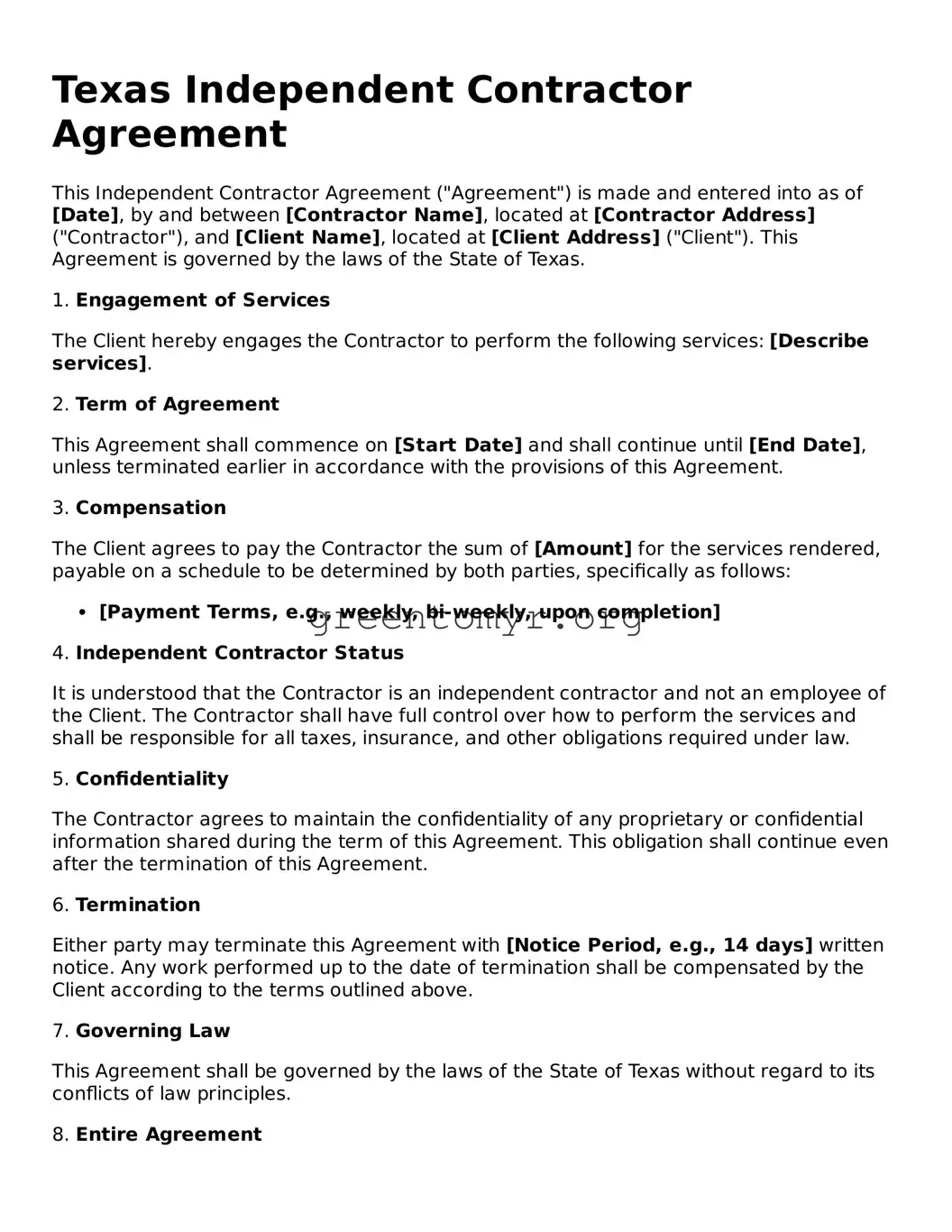Texas Independent Contractor Agreement
This Independent Contractor Agreement ("Agreement") is made and entered into as of [Date], by and between [Contractor Name], located at [Contractor Address] ("Contractor"), and [Client Name], located at [Client Address] ("Client"). This Agreement is governed by the laws of the State of Texas.
1. Engagement of Services
The Client hereby engages the Contractor to perform the following services: [Describe services].
2. Term of Agreement
This Agreement shall commence on [Start Date] and shall continue until [End Date], unless terminated earlier in accordance with the provisions of this Agreement.
3. Compensation
The Client agrees to pay the Contractor the sum of [Amount] for the services rendered, payable on a schedule to be determined by both parties, specifically as follows:
- [Payment Terms, e.g., weekly, bi-weekly, upon completion]
4. Independent Contractor Status
It is understood that the Contractor is an independent contractor and not an employee of the Client. The Contractor shall have full control over how to perform the services and shall be responsible for all taxes, insurance, and other obligations required under law.
5. Confidentiality
The Contractor agrees to maintain the confidentiality of any proprietary or confidential information shared during the term of this Agreement. This obligation shall continue even after the termination of this Agreement.
6. Termination
Either party may terminate this Agreement with [Notice Period, e.g., 14 days] written notice. Any work performed up to the date of termination shall be compensated by the Client according to the terms outlined above.
7. Governing Law
This Agreement shall be governed by the laws of the State of Texas without regard to its conflicts of law principles.
8. Entire Agreement
This Agreement constitutes the entire agreement between the parties regarding its subject matter and supersedes any prior agreements, whether written or oral. Any modifications must be in writing and signed by both parties.
IN WITNESS WHEREOF, the parties hereto have executed this Independent Contractor Agreement as of the date first above written.
CLIENT:
______________________________
[Client Name]
Date: ___________________________
CONTRACTOR:
______________________________
[Contractor Name]
Date: ___________________________
